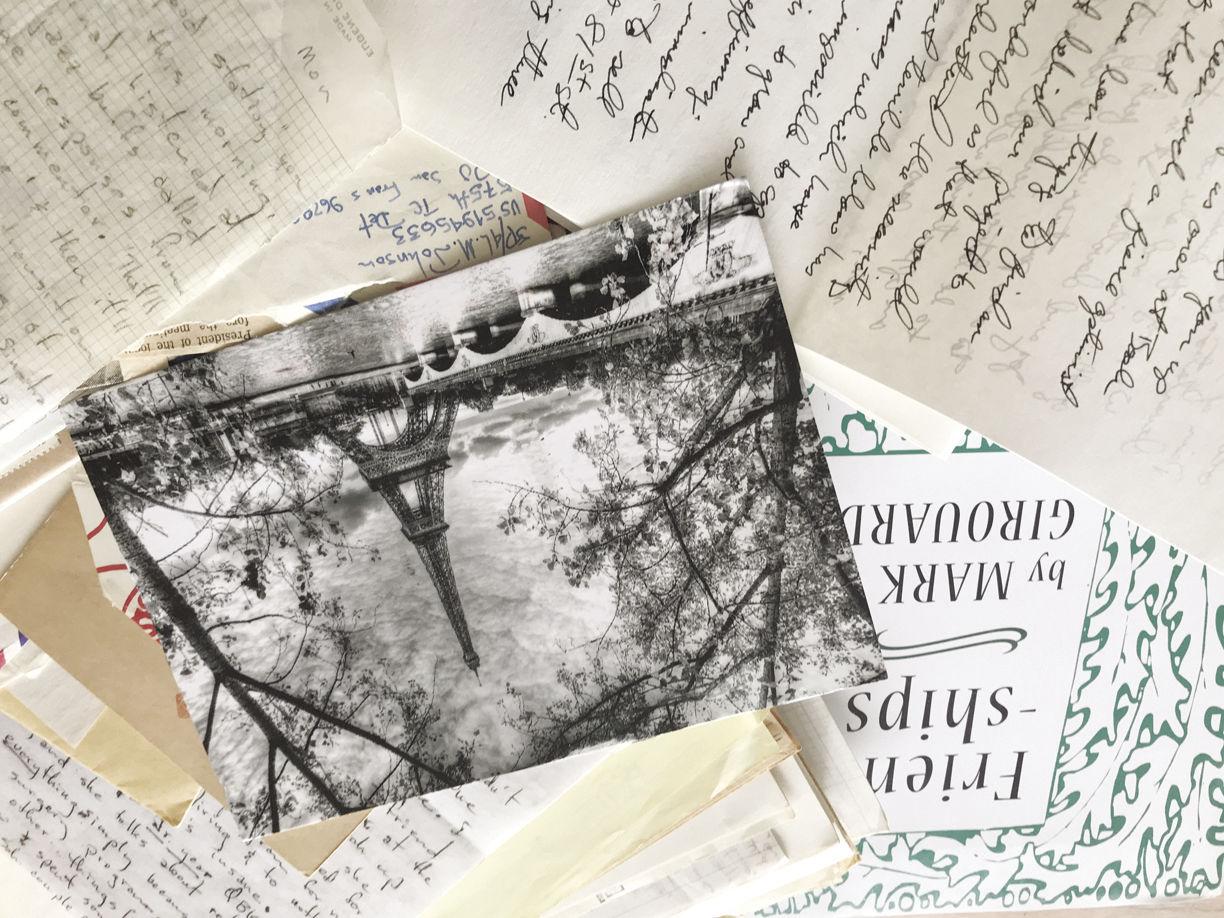The Art of Letter Writing

Originally published in The Laconia Daily Sun ›
“(for I have always found it difficult to throw a letter away, however insignificant) …” writes Mark Girouard, a British architectural historian, preservationist and author, in the introduction to his book Friendships (Wilmington Square Books, 2017, London). The book is a collection of thirty letters, written between 25 April 1945 and 24 March 2007, from friends who have died. The letters are reproduced and followed by Girouard’s beautifully written descriptions of his friendships with the individuals who have sent the letters.
The first thing one notices in Friendships is that most of the correspondence has been written using a fountain pen and either, through print or handwriting, the name of the house or estate, the town or city and the date is included. A few of the letters are only two or three lines and several are postcards. The book was a New Year’s gift last year from a dear friend who cherishes the printed word, illustrated books as objects of art and one who cherishes the craft of letter writing.
I was reminded of the book when I found a handwritten letter from a business colleague in my mailbox. We have been discussing ideas for a project and he sent his thoughts by post. A real handwritten letter. For a few moments I held it in my hand in pure disbelief. The same day I received a lovely postcard from a friend in Paris.
Like Mark Girouard I find it difficult (actually impossible) to discard letters. Last year I organized the letters, cards and notes I received over many years from Lyman Johnson. I met Lyman in Louisville, Kentucky during the summer of 1966 when we were volunteering at Plymouth Settlement House. A few years later he was drafted and sent to Viet-Nam so many of the letters were written while he was stationed there. Lyman Johnson, Sr., his father and a beloved educator in Louisville, was one of the leading forces in integrating the all-white University of Kentucky and he was a Plaintiff in the 1972-1975 federal court case that led to more integration of the Louisville and Jefferson County Public Schools. Through Lyman’s lens these letters now provide an historical look back at the tumultuous 60s.
My library includes a number of books of correspondence. The Letters of Lytton Strachey, The Letters of Vita Sackville-West to Virginia Wolf, Letters to Sartre from Simone De Beauvoir, to name just a few. When I was curating an exhibition around Ned O’Gorman’s life, I spent a week in the Rare Book Library at Georgetown University reading through boxes and boxes of Ned’s letters. I hope to find the time to return one day to go through the boxes I didn’t have time to review. In researching his books Ned would write to leading philosophers, scholars, artists, writers, musicians and theologians. Often the recipients returned long and thoughtful letters. As fascinating to read as an essay in a literary journal.
Now that the world seems to communicate, not even by e-mail, but by text I wonder how these notes will be preserved. They can, of course, can be captured, saved and reprinted. Is it the same? Composing a letter is a form of meditation and requires sitting down, finding proper paper and a pen. Gathering your thoughts before you write. Walking to the post office with your letter carefully tucked into your bag. Selecting a postage stamp.
Letters are treasured. Make a cup of tea and take the time to compose a letter to a dear friend, a colleague, a child or compose a letter and send it to yourself: “I’m gonna sit right down and write myself a letter.” (1935) Certainly, this unexpected gift will bring joy and a smile.